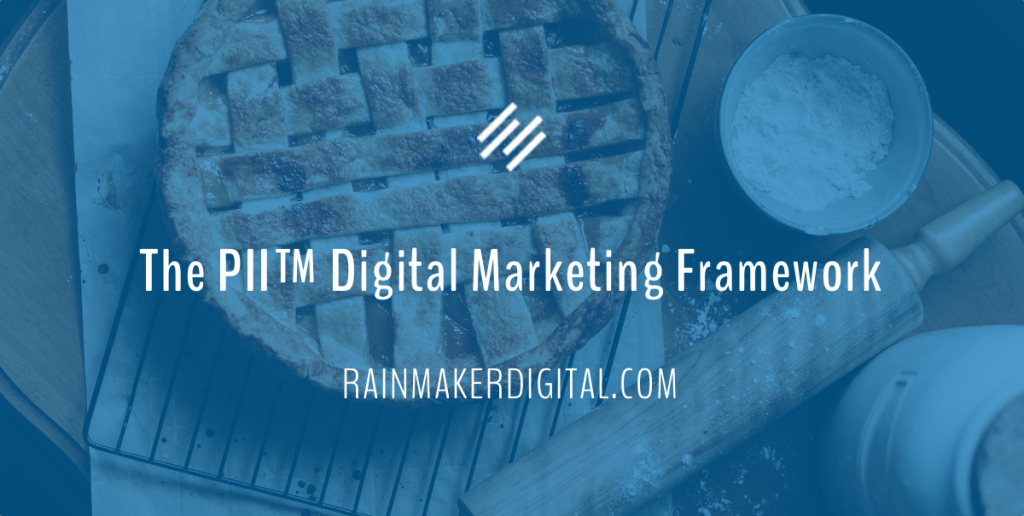

We appreciate the comments and emails that have come in about our “For Everyone Else” digital marketing series. This article addresses one of the most common questions we have received, What’s PII™ all about? One of the reasons the PII™ framework of Promotion, Information, and Inspiration comes up so regularly in our content marketing consulting is that the content framework applies to all types of digital marketing, not just email. Email marketing simply makes the importance of PII™ much easier to understand, evaluate and execute than other forms of marketing.
The Background of PII™
PII™ was developed from an understanding of Interpersonal Communications, which is an area of study within Communications Theory. There are literally thousands of academic papers that research, analyze and model how communication takes place between a sender and a receiver.
For more about Communication Theory, check out the landmark work of Claude Shannon. Though its from 1948, it remains highly relevant today for digital communications, cryptography, and the mathematical methods for information theory.
For marketing purposes, one of the most important benefits of this research is defining the basic structure of communication:

This structure gives marketers specific areas to focus on when trying to generate reproducible success. Within Communication theory, we find the research of Charles R. Berger who investigated interpersonal communication, which combines sociology, psychology and linguistics. While validating, the most important implications of this research for us are:
- The same message will impact recipients differently
- Repetition of messaging can result in impact or being ignored
- People connect / create intimacy through communication
PII™ translates these academic efforts into a practical, actionable and measurable framework that guides how brands connect with audiences.
What is PII™?
PII™ is a content framework that allows content marketers to define how they communicate with the audience, model those communications and analyze content expressions.
A comprehensive content framework contains a range of messages to maintain audience attention. Similar to banner blindness (or your spouse’s nagging), if a brand always shares the same content in the same way, the audience will begin to ignore the message.
PII™ is comprised of 3 types of messages:

Promotion: Promotional messaging will focus on opportunities for recipients to engage with the brand by taking action. Promotional messages can include information about discounts, sales, specials or events though it can be any messaging that is shared to drive action.
Information: Informational messages provide relevant content and educates the audience. Messages can be as simple as company hours, complex data based on research and facts, or professional opinions that use information to differentiate the brand from others.
Inspiration: Motivational messages that inspire the audience or create specific emotional responses to the brand. These posts can include inspirational quotes, testimonial stories, tips, or vision-driving messages.
Every content framework (or PII™), has a unique combination of all three types of messages to build audience engagement.
How to Build Your PII™
Each brand’s unique ratio of promotion, information, and inspiration messages is the key to establishing the authority, authenticity and personality of the brand. Every brand has its own PII™.

A brand’s PII™ contains 100% of the messaging that the brand will share with the audience. In a completely balanced PII™ (not EVER recommended), a brand would message 1/3 promotion, 1/3 information, and 1/3 inspiration:

With a PII™ framework, you can easily manage your content output (and organization) and make sure you’re meeting the content expectations of your audience.
Getting Started with the PII™ Framework
Building a brand’s PII™ can be a challenge. It is critical that the PII match the brand’s personality, benefits, voice and values.
That branding will take priority over category norms. In fact, deviating from brand norms can be a great way to validate a brand’s PII™. To get started, here’s a quick review of content models for various categories:

- Retail: 40% promotion, 30% information, and 20% inspiration
- B2B: 20% promotion, 50% information, and 30% inspiration
- Consumer Services: 35% promotion, 25% information, and 40% inspiration
- Professional Services: 10% promotion, 60% information, and 30% inspiration
- Online Business: 40% promotion, 30% information, and 30% inspiration
Putting PII™ into Practice
Once a brand defines its PII™, content marketers can start creating content. Within a tactic, like an email, the messaging should adhere to the defined PII™. Some marketers attempt to include the entire PII™ mix in one email while others will focus on one of type of message in an email and then build other messages to create the PII™ balance.
There is NO right answer on the implementation of PII™ but there is always a correct answer for the brand and its PII™. Through the structure of PII™, marketers can be challenged to be more creative and rewrite messages to be more promotional, informational or inspirational. Or, the PII™ can force marketers to prioritize messages to fit the model and delete some messages that aren’t of equal quality.
Going through the exercise of matching content to the brand’s PII™ framework will help the brand and its content marketers think, challenge their assumptions and develop messaging that achieves the business’ goals.
One more thing …
Though it will take time and effort to build a brand’s PII™, don’t just build it and put it on the shelf. Like a website, a great PII™ framework is always a work-in-process.
Over time, audiences, messaging and brands change. Make sure you embrace that change and adjust your marketing strategies, including the brand’s PII™ framework, to account for those changes.
If the idea of executing on your own PII™ framework seems overwhelming, know that you don’t need to go it alone. We’re in this with you. If you need a little help, just drop us a line, anytime.
Best Regards,
Ed Bardwell
President
Rainmaker Digital Services